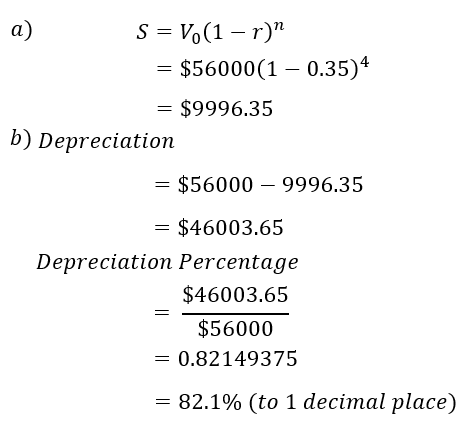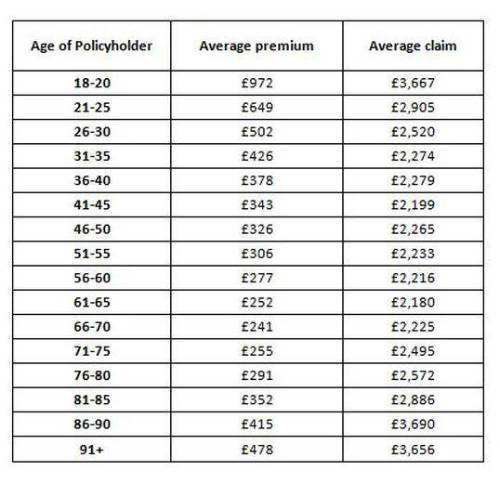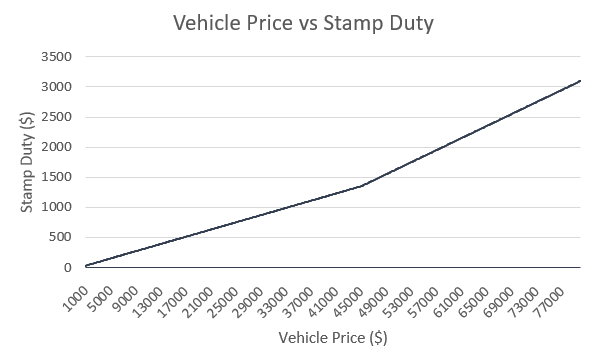You may be thinking… How do you even writes HSC Standard Maths study notes?!
It seems strange writing study notes for a subject when you write so few words in exams. Most students simply copy down what’s written on the whiteboard in class. But then, in the same book they do their classwork and homework.
All in the same book! What you’re left with is a mash-up of syllabus content, along with your crossed out working out and practice questions.
This is why it’s important to have solid study notes just for HSC Standard Maths – but what does this look like?
That’s exactly why we’ve got this simple 6 step guide to writing HSC Standard Maths study notes and getting that Band 6!
Why You Should Make HSC Standard Maths Study Notes
How to Make HSC Standard Maths Study Notes
Step 1: Convert Syllabus into Checklist
Step 2: Define Topic Terminology
Step 3: Break Down Dot Points
Step 4: Include Formulas
Step 5: Add Challenging Questions
Step 6: Include References to Questions
Why You Should Make HSC Standard Maths Study Notes
Reason #1: You Miss Nothing
It ensures that you have covered all the content thoroughly. Being a more filled out version of a checklist, it contains all the content that the course requires you to know.
Reason #2: Easier to Revise
Making study notes makes revision a lot easier later on. You don’t have to browse through hundreds of pages in your school maths book or text book looking for that one formula.
Reason #3: Helps with Revision Process
When I say making notes, I mean you actually making the notes and not just obtaining it from a friend. Actually writing your own notes, helps with the revision process. By making your own notes within 24-36 hours of learning it, it also keeps you up to date with classwork, so you don’t fall behind in class. Because maths often builds on top of what you learnt previously, having holes in your knowledge will result in you having no idea what is going on in the next lesson.
Reason #4: Addresses Weaknesses
Study notes are very personalised.
What people consider important enough to include in their study notes differ greatly from person to person. My study notes were often very minimalistic because I would spend a lot of time practicing questions from a textbook. This allowed me to recall the basic theory and thus I could exclude it from my study notes, to further reduce the browsing needed to find what I needed later on.
If you need some help identifying weaknesses, get in touch with our HSC Maths Tutors Sydney or Sutherland Shire who can get you on track with your study notes!
How to Make HSC Standard Maths Study Notes
Step 1: Convert Syllabus into Checklist
There is a detailed guide to converting the HSC Standard Maths syllabus which you can find here into a checklist below:
Convert the HSC Standard Maths Syllabus into a Checklist Article
It is important to stick as close to the syllabus as possible. Use it to form a study checklist.
This contains checkpoints made from the terminologies and content dot points. In addition, adding the suggested applications and considerations, from the syllabus, which are important.
This is a very important step, because the study notes will be following this checklist backbone.
Step 2: Define Topic Terminology
Go checkpoint by checkpoint on the list. The shared strands and focus studies have their own set of terminology.
Define each terminology in the context that they are used in the topic. This will help in exams because these terminologies may be used.
Example:
Bias: A statistic is biased if it is calculated in such a way that it is systematically different from the population parameter of interest.
Biometric data: metrics related to human characteristics e.g. passport, fingerprints, PIN/password
You should try and define the terminologies that you have you’ve covered so far.
Step 3: Break Down Dot Points
For the content, this is the part that will differ the most from person to person. Depending on the starting verb, dot points require different types of information to be added.
For this part, we have a perfect resource to help you understand and nail each dot point!
If don’t understand a concept, you should check out our FREE video resources for HSC Maths that explain Maths concepts syllabus dot point by dot point here!
A few common examples of verbs from dot points:
Calculate
I like to include one sentence commenting on what else you need to know to answer the most common types of questions, followed by one worked out example.
Example from Syllabus: Calculate the percentage decreases in the value of a new vehicle after one year.
Need to be able to use value depreciation rates to calculate new value of car after one year.
Example Question: A new car is purchased for $56 000. It depreciates in value at a rate of 35% per year.
a) Calculate the book value of the car after 4 years.
b) By what percentage has the car depreciated in value after 4 years?
Analyse
In this case, understand what the analyse refers to. In the example below, it can ask you to interpolate/extrapolate information from a table, data set or graph.
Example from Syllabus: Analyse theft and accident statistics in relation to insurance costs.
Need to determine appropriate predictions or trends from data sets represented in various forms e.g. tables, data set or graph
Again, because it is maths, add an example.
By analysing the above graph, it can be seen that insurance is very high amongst teens and decreases at a decreasing rate until it reaches the age of 55. After this point, the insurance costs increases as the driver ages.
It can be interpolated that teens pose a higher risk of collision, supported by the table below (higher average claims), thus their insurance costs are higher. Also, as a driver ages, they become more experienced, reducing risk of collision and thus reducing insurance cost.
It may be extrapolated, that the insurance cost increases beyond the age of 70 due to the ageing of the driver, causing reductions in cognitive and physical abilities. This worsens with age and thus they pose a greater risk of collision, increasing insurance costs.
Create
This involves some sort of visual representation of mathematical information. Most commonly a graph.
Example from Syllabus: create a line graph showing the stamp duty payable on vehicles of various prices. E.g. create a line graph for vehicles priced from $1000 to $80 000
I’ll do an example line graph for this. You’ll usually include the question and the graphical solution immediately after the checkpoint.
Example Question: Stamp duty is charged at the following rate: 3% of the market value up to $45 000 plus 5% for any amount over $45 000. Graph the relationship between stamp duty payable and vehicle prices from $1000 to $80 000.
Note: As you can see, this step is high personalised. From the explaining sentence of the dotpoint, which explains it in greater depths so that you understand its requirements, to putting the worked solution in graphs/tables.
It’ll take a little bit of work to get used to the process but if you complete your study notes soon after learning the content, you’ll still remember what confused you or was more difficult to you at the time.
Therefore, you’ll know what to put more emphasis on when writing your notes, because months after learning the content, chances are you run into the same problems that you had when you first learnt the content.
Now You Try: Write up an example for two other starting verbs from the syllabus.
Step 4: Include Formulas
Make sure you include the formulas required. Hopefully, all the formulas you include are demonstrated in the worked solutions that you used for examples or at least paired with a checkpoint.
If not, then try to differ the worked solutions that you use.
Even though the formula is given on the data/formula sheet, having it visually placed next to the content/theory while studying will give you a greater chance of recalling the formulas required upon seeing a question containing words from your notes.
This, ultimately, will save you valuable time in the exam.
Step 5: Add Challenging Questions
I like to put challenging questions in my study notes. HSC/trial papers are really good examples, since you’ll likely see questions of similar difficulty.
Make sure to include worked solutions and where to find it e.g. HSC 2015 question 28.e (a good example of scatter plots and line of best fits).
Placing this at the end of a topic’s study notes will allow you to see harder applications of the content after being refreshed by the basic theory.
Now, look through a few HSC past papers here and pick three questions for each topic, you’ve covered so far, into your study notes.
Step 6: Include References to Questions
This is optional, but I also reference where to find certain questions pertaining to the topic.
That way, as you are reading your notes, you can refresh your memory then immediately give some questions a go.
Really useful when it comes to revision time and saves yourself the need to scan countless exam papers to find a question to practise on.
Tips
There’s a few extra (minor) things to keep in mind before starting your study notes. This will make the process easier and better the end result.
Tip #1: Stay Up to Date
Try to complete your study notes, for a particular topic, within two days of learning the content at school.
This ensures that you can adequately complete any classwork/homework.
Also, by writing your notes while it is still fresh in your mind, you can include extra information/links to resources on parts of the content that you found difficult when you first learnt the content. When it comes to revision time, you may run into the same difficulties.
Always falling behind? Here’s what to do before, during, and after class to stay on top of your study notes and be more efficient!
Tip #2: Change It Frequently
As you progress throughout the year, you’ll find that some of content is now intuitive to you.
If this is the case, you may remove the content from your study notes. This shortens the amount you have to read over for your revision, allowing you to skip directly to the topics/questions that you find more difficult.
Be careful, removing part of your notes too soon may result in you forgetting it later on. So be absolutely sure you will not need to revise it again.
Do, however, keep it in your checklist, so that you may see a complete list of everything you need to know. Only remove your extra additions: your 1-2 sentence comment, example questions and worked solutions.
Tip #3: Study Notes are Not the Be-All and End-All
Making extensive study notes is only one of the steps to mastering high school mathematics. Learning the theory and seeing it applied is an important part of the learning process.
However, actually working on questions, particularly trickier applications will be absolutely essential to scoring high marks in standard maths. Use these notes as a way of revision and expand on that base of knowledge by repeatedly doing questions.
After all, the standard mathematics exam is all about answering new, unseen questions (infinite combinations by changing the numbers) and not regurgitating information.
And that wraps up our guide to nailing your HSC Standard Maths study notes – good luck!
Trying to achieve a Band 6 in Standard Maths? Check out our tips for scoring one here!
Revising for your exams and want to improve your study notes for other subjects?
We’ve got guides for a range of subjects, which you can check out below:
- Biology
- Chemistry
- Physics
- Legal Studies
- Economics
- Visual Arts
- PDHPE
- Standard & Advanced English
- Advanced Maths
- Modern History
- Ancient History
Looking for some extra help with HSC Standard Maths?
We pride ourselves on our inspirational HSC Standard Maths coaches and mentors!
We offer tutoring and mentoring for Years K-12 in a variety of subjects, with personalised lessons conducted one-on-one in your home or at one of our state of the art campuses in Hornsby or the Hills!
To find out more and get started with an inspirational Sydney Maths tutor and mentor get in touch today!
Give us a ring on 1300 267 888, email us at [email protected] or check us out on TikTok!
Thomas Zheng enjoys using numbers in every aspect of life. So much so that he just had to take Civil Engineering at UNSW, because even Extension 2 in high school did not satisfy that need. Now he’s writing (with actual words) for Art of Smart because he understands the importance of balance in life. I guess that’s why he spends most of his time watching TV shows and movies as opposed to doing ‘something productive’ as his teachers used to say, because that totally demonstrates how much he understands that balance thing.








